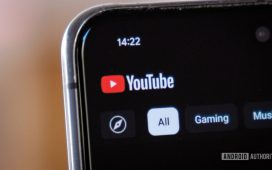
C. Scott Brown / Android Authority
TL;DR
- A new report has revealed how the Samsung Galaxy S25’s satellite connectivity works.
- Galaxy S25 owners are able to connect with emergency services, share their location, and send/receive texts with the response team.
- It also turns out that there’s only one small difference between Samsung and Google’s emergency SOS interfaces.
Verizon teamed up with wholesale provider Skylo to offer satellite connectivity features on the Samsung Galaxy S25 series and Google Pixel 9 range. Now, Skylo has outlined how the feature works on Samsung’s new phones and revealed the difference between satellite functionality on the Galaxy and Pixel phones.
Pete Saladino, global head of marketing for Skylo, told Mobile World Live that both the Galaxy S25 and Pixel 9 phones will look for satellite connectivity via the firm’s software layer when they lose terrestrial reception. Skylo’s ground-based stations connect to satellites from several providers, and this enables Google and Samsung’s new flagships to automatically connect to the provider with the best signal in Canada and the US.
Galaxy S25 satellite SOS: How does it work?
Saladino explained that the emergency SOS service had three main features: the ability to connect with emergency services, the ability to share the user’s locations with Garmin’s emergency response service, and the ability to send/receive texts with Garmin’s response service.
The service would then tell Galaxy S25 series owners to stand outside with a clear view of the sky to ensure proper satellite connectivity. From here, it would ask users about their type of emergency and request more details. The first message takes roughly three to four seconds to send, while a subsequent response from the provider should take five or six seconds.
How important is satellite functionality to you?
0 votes
Interestingly, the Skylo team said the only difference between Samsung and Google’s emergency SOS interfaces was that Google’s UI had a green arrow showing users which direction to face for optimal connectivity. We’ve asked Skylo for more details about Samsung’s UI and will update the article accordingly.
The company also outlined future developments, saying it was working on SMS and voice call functionality. This also comes as T-Mobile gears up for satellite-based texting in partnership with Starlink while also promising voice calls down the line.










